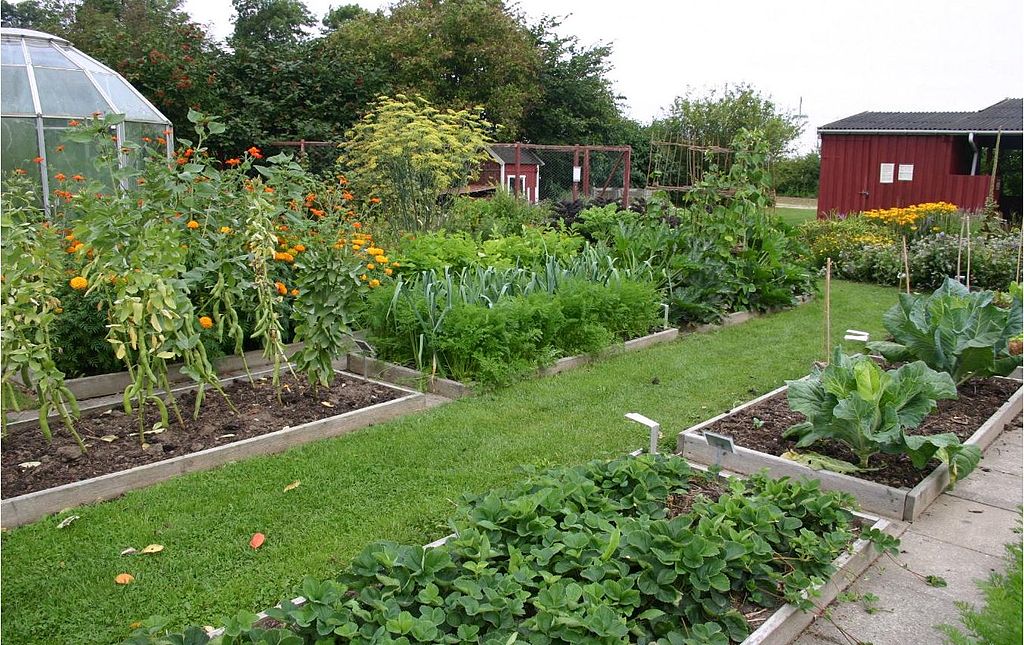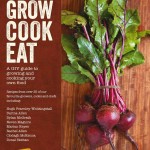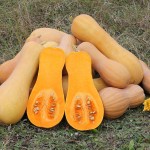There’s always a moment in every GIYer’s year when things pivot from a focus on the current year to preparing for the next. It always amazes me how suddenly it happens (and how early—I mean we’re still in peak produce mode from this year’s growing). I was clearing a bed the other day in which I grew squashes, pumpkins, sweetcorn and beans this year—harvesting the last of the produce, getting the dead/dying plants on to the compost heap, and turning over the soil with a fork to clean up the beds.
As I worked, I started to think about what would be growing in the bed next year. In the potting shed I have a notebook in which I plan my crop rotation—that sounds more organised than it really is. My planning involves no more than a basic sketch of the veg patch so I can map out a five-year rotation with the patch divided in to five areas, one for each major veg family (based on the easy-to-remember mnemonic People Love Bunches Of Roses for Potatoes, Legumes, Brassicas, Onions, Roots). So everything simply moves around for 2015 with the brassicas going where the legumes were this year and so on. It’s a pretty straightforward way to keep the veg patch fertile and reduce the prevalence of pests and disease (the essence of a productive, organic plot).
Anyway, having worked out broadly what’s going to go where next year, I found myself standing in the veg patch imagining what will be in each location, and thinking about the soil requirements and the work to be done on each area over the winter. As you can imagine, I had long since lost sight of the job I was there to do. The focus has moved on again and another year of growing suddenly beckons.
Grow Cook Eat
Our brand new grow/cookbook, called Grow, Cook, Eat (A GIY guide to growing and cooking your own food) is published this month. The book is a no-nonsense month-by-month guide to growing your own food, written by GIY founder Michael Kelly, and featuring seasonal contributions and recipes from over 35 of GIY’s favourite chefs, cooks and growers including Hugh Fearnley Whittingstall, Dylan McGrath, Donal Skehan, Darina Allen, Neven Maguire, Marian Keyes, Rachel Allen, Clodagh McKenna, Mark Diacono, Joy Larkcom and Alys Fowler. Available from all good book stores and from the GIY website at www.GIYireland.com. RRP €25.
Things to do this October
To Do
Pot up herbs to grow inside over the winter. Continue to lift crops that have finished harvesting and clean up the beds. Sow over-wintering green manures. If you are going to cover empty beds down with manure for the winter, the earlier you do it the better. Try and find a good source of farmyard manure if you don’t have your own—cow, horse, pig, sheep and chicken manure are all great sources of nitrogen, phosphorus and potassium for your soil. Cut autumn fruiting raspberry canes down to the ground.
Sow
You can sow hardy varieties of peas and broad beans later this month for an early spring crop but only do so in well-drained soil. In the polytunnel get a crop of cauliflower and carrots going over the winter. Plant selected varieties of garlic and winter onion sets.
Harvest
Depending on the weather, the harvest may well continue in to October—pumpkins, squashes, courgette, apples, pears etc. It’s the last hurrah however for peas, beans, tomatoes, cucumbers, aubergines, peppers and chilli-peppers. Continue to harvest wild mushrooms, elderberry, blackberries, sloes, carrots, potatoes, parsnips, swedes, celeriac, turnip, beetroot, celery, marrows, leeks and cabbage.
Recipe of the Month—Parsnip and Squash Bake
Two things I am pleased to say I have an abundance of presently—parsnips and squashes. This is a super-rich, creamy, bubbly, indulgent, melt-in-your mouth delicious recipe. Serves 4–6.
Ingredients:
- 220ml double cream
- 1 small onion, finely chopped
- 2 thyme sprigs, 1 stripped of leaves
- 4 large parsnips
- 1 medium sized butternut squash
- 25g Gruyère, grated
Directions:
Preheat oven to 160°C. Place the cream, onion and thyme sprig into a small pan. Slowly heat to just below boiling point, then remove from the heat and leave to cool. Strain, discarding the onion and thyme. Grease the bottom and sides of a gratin dish (20×30cm) with butter. Peel the parsnips and peel and de-seed the squash. Thinly slice the vegetables and layer in the dish. Pour over the cream, then scatter with the thyme leaves and Gruyère. Bake for 1 hour until golden.
Tip of the Month—Seaweed Foraging
To some it’s just a slimey mess, but to GIYers (and a growing legion of followers who covet it for it’s health-giving properties in the bath and kitchen) it’s an invaluable way to return nutrients to the soil each year. There are however some dos and don’ts when it comes to seaweed foraging. The main thing is that you should never pull seaweed off the rocks. Remember that seaweed is a plant, and just like any other plant, if you pull away its root, it will die. Instead use a scissors and cut the plant, leaving about 6–8 inches behind, so that it will grow back. If we follow these simple guidelines, there will be plenty of seaweed to go around. For good reading on seaweed foraging and recipes check out Sally McKenna’s Extreme Greens.
Michael Kelly is a freelance journalist, author and founder of GIY.
© GIY Ireland 2014—all rights reserved.






